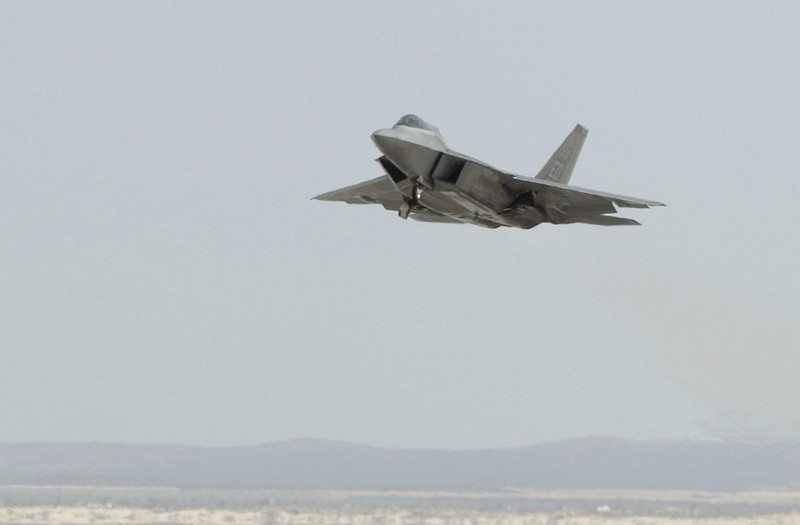The US Air Force is “confident” it has identified the problems that led some pilots to complain of dizzy spells and blackouts while flying its most advanced fighter jet, the Pentagon said Tuesday.
The “root cause of the issue is the supply of oxygen” — necessary for pilots flying at high altitudes — “not the quality of oxygen delivered to pilots,” Pentagon spokesman George Little told reporters.
To fix the problem, Little said the Air Force will replace a valve that was causing inflation in a vest pilots wear at high altitudes, impeding breathing for some.
The Air Force will also increase the flow of oxygen to pilots by removing a filter that monitored whether the oxygen contained any contaminants, after determining there were none.
A new emergency oxygen supply system will also be installed on the planes.
“We have very high confidence that we have identified the issue,” Little said, but “it’s going to take us a while to ensure that all of the relevant components are replaced.”
The fleet of 187 F-22 Raptors was grounded last year for four months after a spate of incidents of pilots saying they had passed out or suffered a lack of oxygen.
Engineers were still trying to solve the problem when flights resumed in September 2011. But pilots continued to express concerns over oxygen issues on the F-22s, leading Defense Secretary Leon Panetta to restrict the stealth fighters to lower altitudes and shorter ranges, within easy reach of a runway.
Panetta has now approved lifting those restrictions over time, after “receiving assurances that these corrective measures would minimize” the risk of further dizzy spells or blackouts, Little said.
A squadron of F-22 Raptors is going to be deployed to Japan, flying there via a low-altitude route. “Following completion of the flight to Japan, the Air Force will recommend resuming most long-duration flights,” the Pentagon spokesman added.
The F-22, the most expensive aircraft in the US fleet at $143 million each, flies at a higher altitude than other jets, above 50,000 feet. It also relies solely on pressurized oxygen instead of a mixture of oxygen under pressure and air in the cockpit, according to the Air Force.
The plane is faster and more agile than older fighters, with the pilot facing more gravitational forces than in other planes, officials say.
But the F-22 has yet to be deployed in combat, and its cost overruns became a long-running political controversy until the program was curtailed.
[ppgallery id=”33″]









